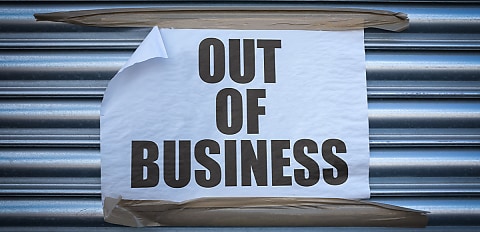As of October, the failure rate for Aussie businesses was 5.04 per cent. This is the highest it’s been since October 2020, amid the peak of the pandemic, where it sat at 5.08 per cent.
As of October 2023, this figure sat at just 3.97 per cent, showing a decent climb in the past year.
The data, found in CreditorWatch’s Business Risk Index results for October, highlighted how interest rates, a rising cost of living, and increased wages are compounding and hurting businesses.
“Together with some greater caution in discretionary spending and softness in interest rate sensitive sectors of the economy, this unsurprisingly has led to higher voluntary business closures and some rise in insolvencies,” said CreditorWatch chief economist Ivan Colhoun.
“We’re yet to see the extent to which the 1 July tax cuts now flowing through the economy, will ease some of the pressures on consumers and businesses. Pleasingly the unemployment rate remains very low at 4.1 per cent. Consumer confidence readings have risen notably from very low levels in recent months, business confidence also rose in October and business conditions are around long-term averages.”
The last interest rate spike from the RBA was on Cup Day in November 2023. This may have played a role in the continued climb throughout the year in the pressure facing businesses.
Meanwhile, insolvencies and loan arrears for businesses are on the rise, with the data showing insolvency rates have doubled over the last 18 months and are up around 25 per cent higher than pre-pandemic.
The industries worst impacted by business failures between November 2023 and October 2024 were:
- Food and beverage services (8.5 per cent)
- Administrative and support services (6 per cent)
- Arts and recreation services (5.9 per cent)
- Transport, postal, and warehousing (5.8 per cent)
- Construction (5.3 per cent)
- Retail trade (5.3 per cent)
- Accommodation (5.2 per cent)
- Education and training (5.2 per cent)
- Information media and telecommunications (4.9 per cent)
- Manufacturing (4.9 per cent)
Patrick Coghlan, CreditorWatch CEO said that business owners are in desperate need of rate relief.
“A slowdown in the inflation rate will certainly help businesses but we must remember this just means that price rises have slowed down, so the cost pressures remain. In most cases, you won’t see the cost of goods and services coming down,” said Coghlan.
“Businesses desperately need interest rates to come down so households have some relief in cost-of-living pressures and start spending more.”
However, we could be out of the worst of it as CreditorWatch believes interest rates and inflation have peaked. While conditions won’t change in an instant, the gradual decline in inflation and interest rates will likely improve business failings.
Related: Late repayments from businesses at highest level since 2021

